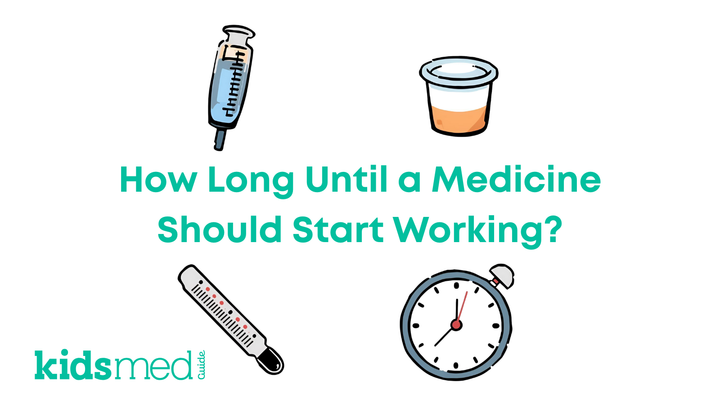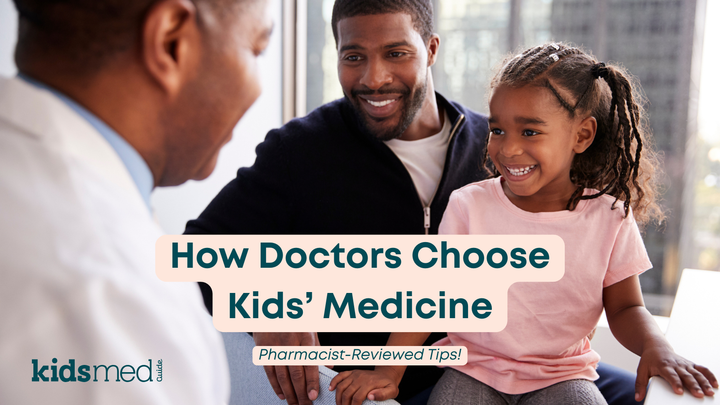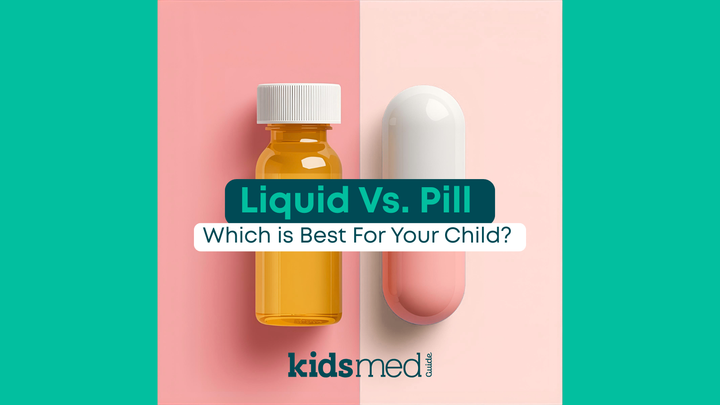Managing Side Effects: What’s Normal Vs. What Needs Medical Attention
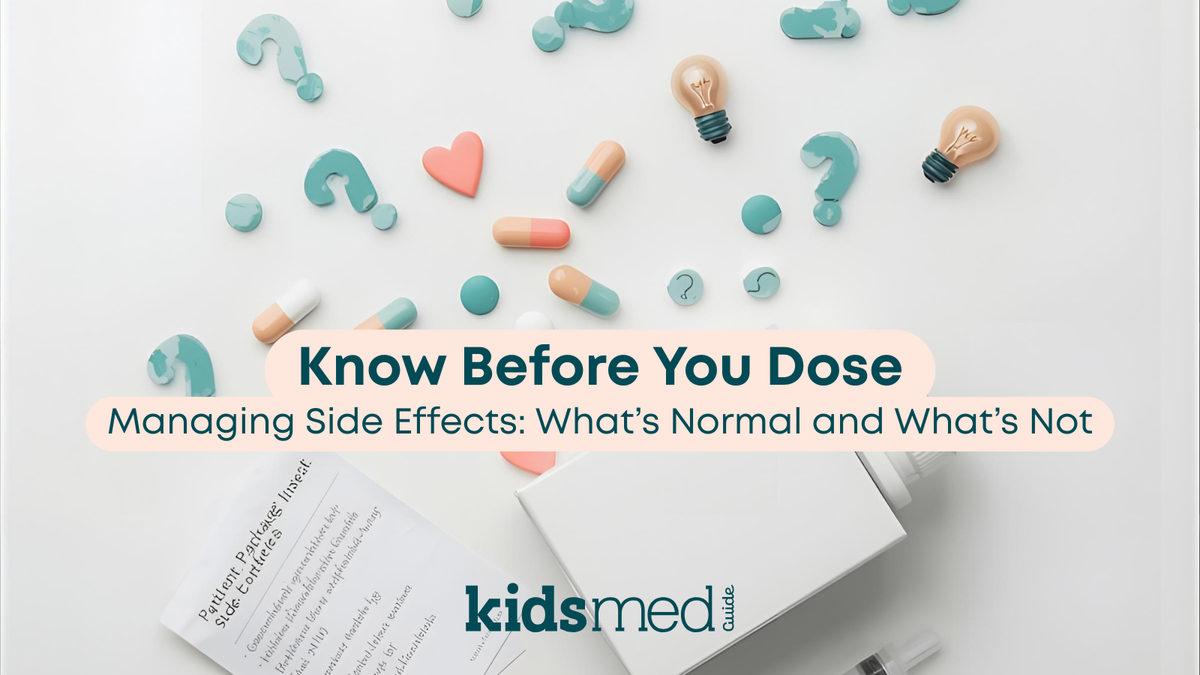
When my daughter was 4, she had a strange rash with some hives. We believe a virus caused them. After talking to her pediatrician, I decided to try an antihistamine. Cetirizine (Zyrtec®) would have been ideal, but I was out! So I gave her a dose of liquid diphenhydramine (Benadryl®).
I expected her to get sleepy and curl up for a nap. Instead of feeling drowsy, she became restless and silly! I’m talking, jumping on the couch, chatting a mile a minute, doing flips in the air—kind of restless. That was my first personal experience with a paradoxical reaction, where a medicine causes the opposite of its intended effect. With diphenhydramine, it can happen in about 10-15% of children who take a dose, and it’s also one reason we tend to avoid using it in young kids.
That night, while memorable, reminded me that medication side effects aren’t always predictable. Side effects can happen, and they can differ depending on a child’s age, dose, metabolism, and genetics. That’s why it’s so important to read the medication’s patient information leaflet and talk with your child’s doctor or pharmacist before starting a new medication. They can help you understand what to watch for, which reactions are common, and which reactions are serious.
Why Understanding Medication Side Effects Is Important
When your child starts a new medicine, it’s easy to focus only on whether it works. But understanding common side effects can help you stay calm if something unexpected happens. Knowing what’s typical helps you to avoid unnecessary worry.
It also helps you identify serious reactions early. Some rare medication side effects can be dangerous, and being informed is important.
Every medication has a balance of benefits and risks, and your healthcare provider can help you evaluate those. The goal is always to use the least amount of medicine possible in children and at the lowest doses, but sometimes medication is necessary.
If the benefit of an intended medication outweighs any risks, parents don’t need to fear side effects, but they should understand them well enough to act quickly and safely if they occur.
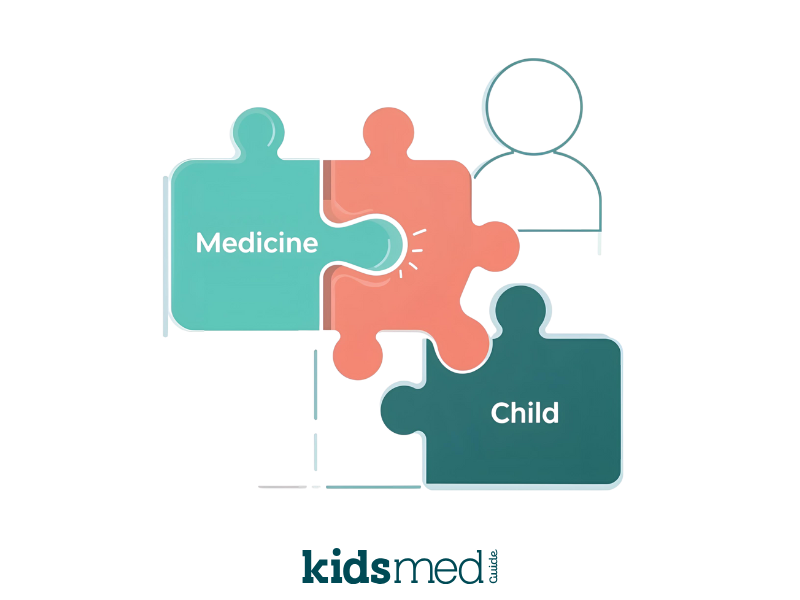
Common Types of Medication Side Effects
Mild and expected side effects
Some reactions are common or may be part of your child’s body adjusting to medication. These can include:
- Mild nausea, mild diarrhea, or stomach upset
- Slight drowsiness or fatigue
- A light rash
- Headache
These side effects are specific to the drug, but they often fade after a few doses. Encourage hydration, offer food if permitted (check the patient insert), and monitor how your child feels. For issues like a rash, keep a close watch. Usually, no significant intervention is needed.
If mild or expected side effects worsen or progress, contact your child’s doctor. For example, stomach upset or mild diarrhea should not develop into pain or severe diarrhea.
Serious or unusual side effects
Other reactions deserve immediate medical attention:
- Difficulty breathing or swallowing
- Swelling of the face, lips, or tongue
- Severe hives or widespread rash
- High fever or stiff neck
- Sudden confusion or unresponsiveness
- Seizures
- Severe vomiting or diarrhea that won’t stop
Some medications can cause rare but serious side effects that impact organ function or other body systems. Examples may include liver or kidney damage. These side effects usually develop gradually. The patient package insert should warn you of symptoms to watch for that could indicate a serious side effect.
Even something that appears minor — like agitation or sudden hyperactivity after a sedating medication — can indicate your child’s body is responding differently than expected. When unsure, contact your healthcare provider.
Side effects of antibiotics
Antibiotics deserve their own spotlight when discussing medication side effects! These vital medications save lives, and most children will need an antibiotic at some point.
However, they also come with some unique concerns. Side effects of antibiotics in children often include:
- Upset stomach, nausea, or loose stools
- Diarrhea (affects up to 30% of children)
- Mild skin rash or yeast infection due to changes in normal bacteria
Rarely, antibiotics can cause serious allergic reactions or infections like C. difficile, which require immediate medical attention. If you notice new or severe symptoms, stop the medication and contact your doctor right away.
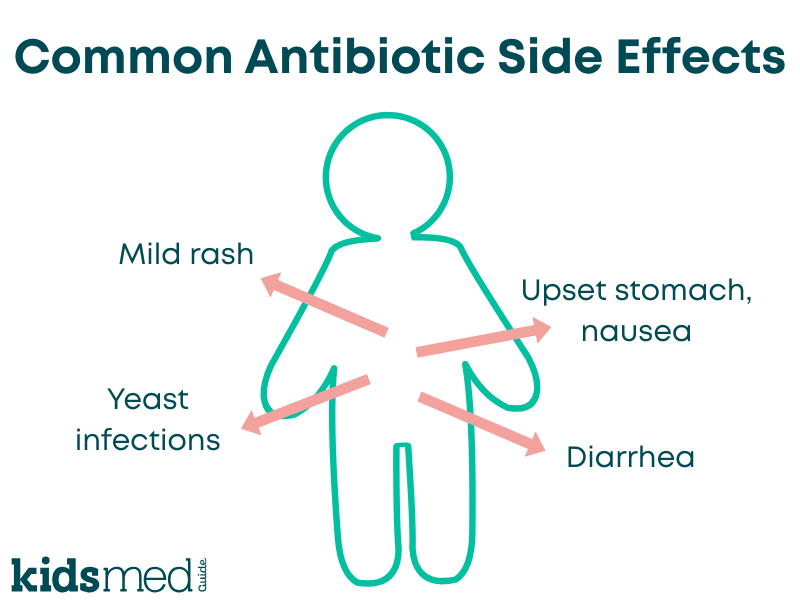
How to Manage Side Effects at Home
When side effects are mild, you can often manage them safely at home:
1. Keep a symptom journal. Record when you give the medication and what happens afterward. Try our medication tracker.
2. Help your child stay well-hydrated. Fluids help reduce headaches, dizziness, and stomach upset.
3. Give doses with food if the label indicates it’s safe.
4. Schedule doses thoughtfully. If a medication causes drowsiness, take it at bedtime; if it causes energy boosts, try taking it in the morning.
5. Relieve symptoms. Get plenty of rest if your child is drowsy while adjusting to a new medication. For mild rashes, try a cool compress.
6. Avoid giving extra medicine to alleviate side effects unless your healthcare provider advises you to.
If a mild reaction lasts more than a couple of days, worsens, or new symptoms appear, reach out to your healthcare provider for guidance.
Communicating with Healthcare Providers
When you call your pediatrician or pharmacist about a side effect, come prepared. Bring your symptom log and be specific: when the side effect started, how long it lasted, and how severe it was.
Be sure to include any extra details, such as missed doses, new foods, OTC medications, or supplements. The more complete the information, the easier it is for your child’s doctor to decide whether to continue, modify, or stop the medication.
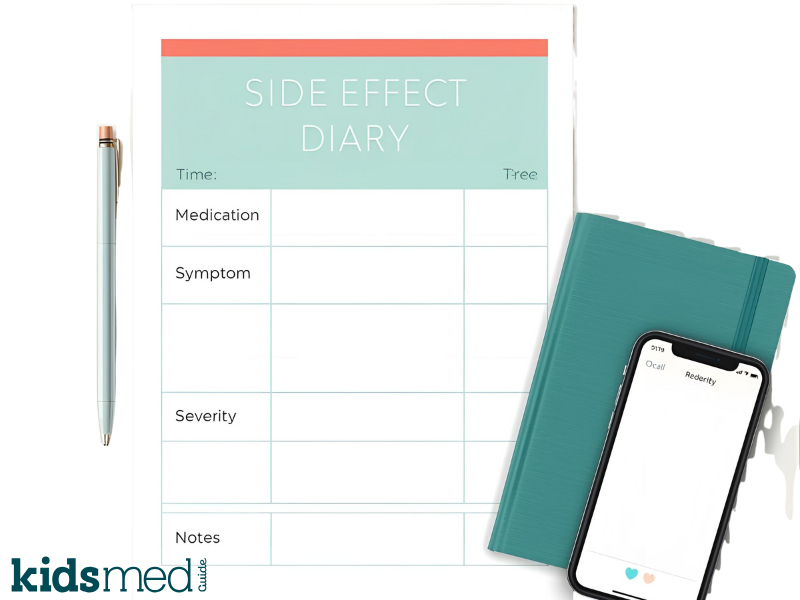
Conclusion
Sometimes side effects happen, and you’re managing an impromptu Benadryl-induced dance party at 10 PM. You can’t prevent all of them...
Whenever your child receives a prescription, ask your doctor or pharmacist about which side effects of the medication to watch out for. Also, read the patient information leaflet, which explains common and serious effects to look for.
Frequently Asked Questions
What are the common side effects of children’s medications?
This varies depending on the drug and the individual. Generally, typical side effects include nausea, mild diarrhea, rash, drowsiness, and stomach upset.
When should I contact a doctor?
Call emergency services immediately if your child experiences severe symptoms such as difficulty breathing, seizures, or signs of anaphylaxis. Contact a doctor or seek care if you have hives, a significant rash, moderate-severe vomiting or diarrhea, or if mild side effects worsen or linger.
How can I manage mild side effects at home?
For mild symptoms, staying hydrated, giving medicine with food (if permitted), timing doses wisely, and using comfort measures usually do the trick.
Are antibiotic side effects different?
They can be. Stomach upset, nausea, diarrhea, and yeast infections are more common with antibiotics, and allergic reactions can appear either immediately or after several doses.
How do I track and report side effects?
Use a simple table or chart with the medication name, dose, symptom, timing, and notes. Bring it to every appointment.
The following references were used to compile this information:
Antibiotics for Children: 10 Common Questions Answered. (2022, November 1). HealthyChildren.Org. https://www.healthychildren.org/English/safety-prevention/at-home/medication-safety/Pages/Antibiotic-Prescriptions-for-Children.aspx?utm_source=chatgpt.com
Khan, W. N., & Tobias, J. D. (2025). Diphenhydramine: A Review of Its Clinical Applications and Potential Adverse Effect Profile. The Journal of Pediatric Pharmacology and Therapeutics : JPPT, 30(2), 182–190. https://doi.org/10.5863/1551-6776-30.2.182
Medication Side Effects & Reactions. (2016, May 13). HealthyChildren.Org. https://www.healthychildren.org/English/safety-prevention/at-home/medication-safety/Pages/Medication-Side-Effects.aspx

